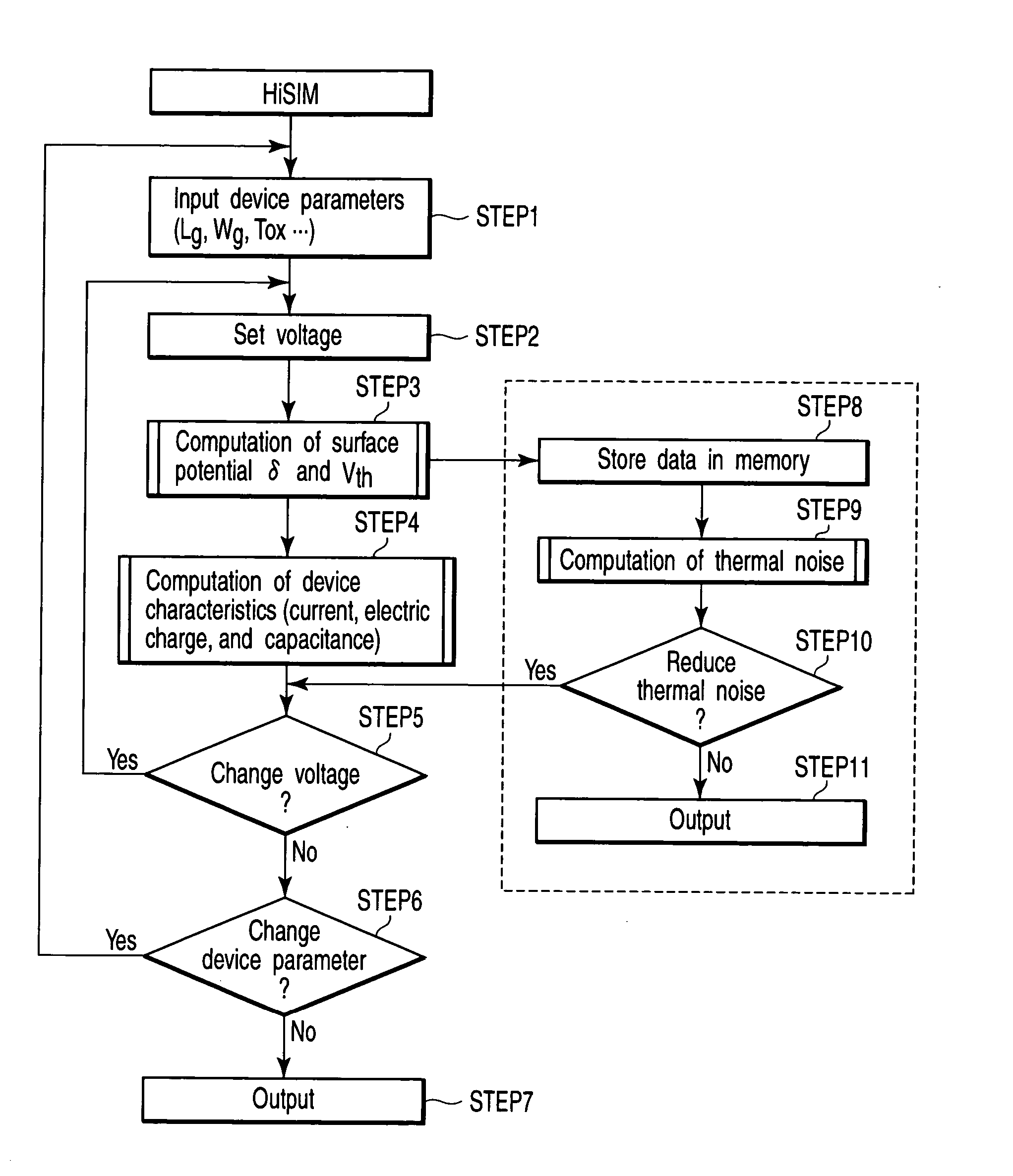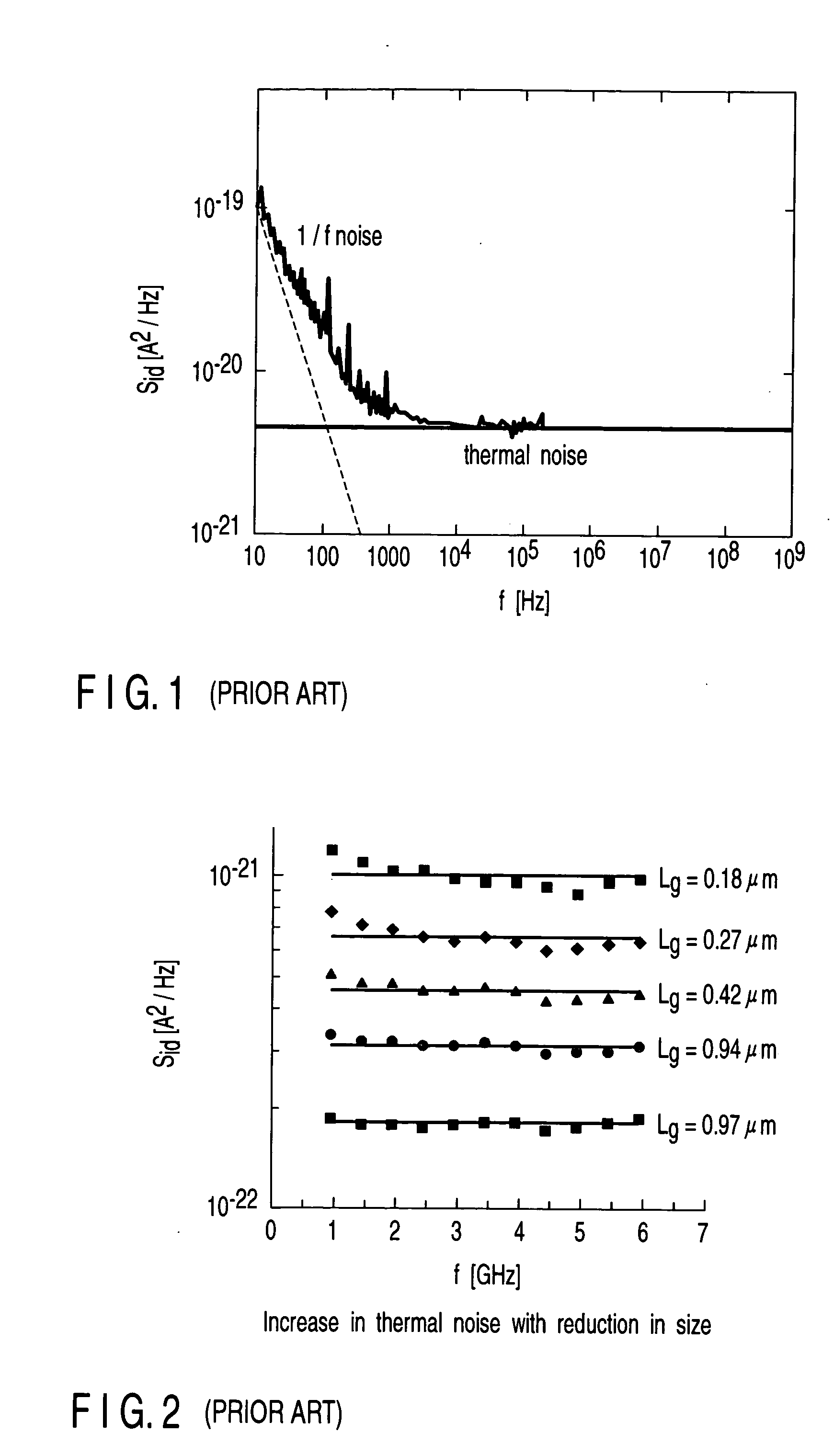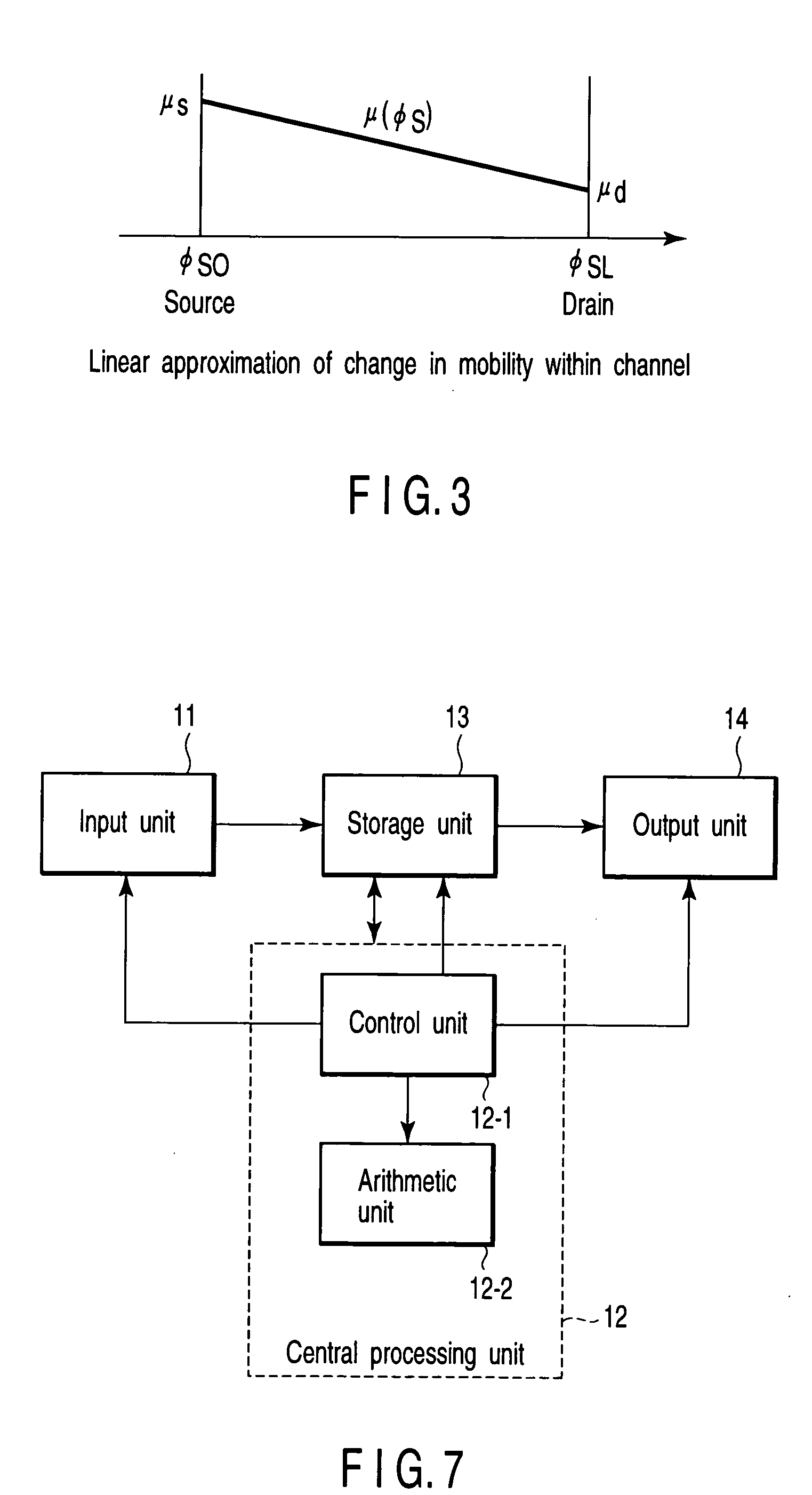Simulation model for design of semiconductor device, thermal drain noise analysis method, simulation method, and simulation apparatus
a simulation model and semiconductor technology, applied in the direction of semiconductor/solid-state device details, optical radiation measurement, instruments, etc., can solve the problems of reducing the size of the mosfet, generating noise has become a serious problem, and the thermal noise is small, so as to accurately estimate the thermal noise
- Summary
- Abstract
- Description
- Claims
- Application Information
AI Technical Summary
Benefits of technology
Problems solved by technology
Method used
Image
Examples
Embodiment Construction
[0040] A simulation model for the design of a semiconductor device will be described first. An example of a simulation method and apparatus which use this simulation model will be described next.
(A) Derivation of Basic Equation for
[0041] Thermal Drain Noise
[0042] First of all, a basic equation is derived from a thermal noise model based on the H. Nyquist theorem (H. Nyquist, Phys. Rev., 32, 110, 1928, “Thermal Agitation of Electric Charge in Conductors”): Sid=1L2∫0L4k T gds(x)ⅆx(4)
[0043] In a MOSFET, letting φs be the potential at a distance x from a source terminal, and gds(x) be the small channel conductance, gds(x) can be expressed in terms of a function gds(φs) of φs. Since the drain current is expressed as Ids=gds(ϕs) ⅆϕsⅆx(5)
the integration of the two sides within the channel yields Ids=1L ∫ϕSOϕSLgds(ϕS)ⅆϕS(6)
where φs0 and φsL represent the surface potentials at the source terminal and drain terminal in the channel.
[0044] According to equation (5) as...
PUM
 Login to View More
Login to View More Abstract
Description
Claims
Application Information
 Login to View More
Login to View More - R&D
- Intellectual Property
- Life Sciences
- Materials
- Tech Scout
- Unparalleled Data Quality
- Higher Quality Content
- 60% Fewer Hallucinations
Browse by: Latest US Patents, China's latest patents, Technical Efficacy Thesaurus, Application Domain, Technology Topic, Popular Technical Reports.
© 2025 PatSnap. All rights reserved.Legal|Privacy policy|Modern Slavery Act Transparency Statement|Sitemap|About US| Contact US: help@patsnap.com



